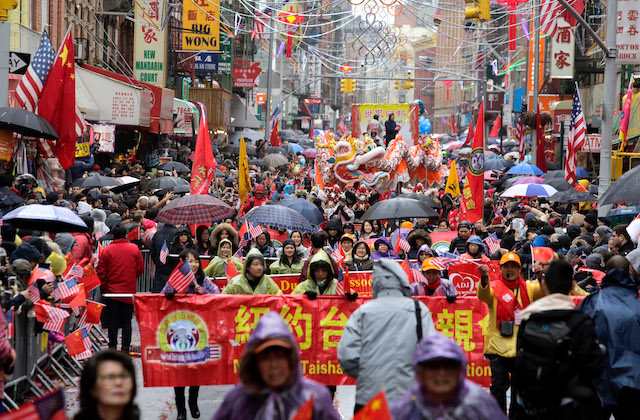Lunar New Year Reads: 5 Reflections on the Year of the Pig

Members of the global Chinese, Korean, Vietnamese and other East and Southeast Asian diaspora celebrate today (February 5) as the first day of the Lunar New Year. The Year of the Pig's beginning affects so many people worldwide that Google recognizes it on its homepage:
The #YearOfThePig is here!
— Google Doodles (@GoogleDoodles) February 5, 2019
Today, East Asian nations & many others around the world celebrate #LunarNewYear with night parades, family time, & fireworks. Learn more about this joyous day & the traditions of each country. #GoogleDoodlehttps://t.co/VIaUYXio7F
The millions of people observing this holiday include Asian Americans, for whom the Lunar New Year may offer important connections to their families, ancestral cultures and sense of identity. To gain some perspective into the diverse ways these communities relate to the Lunar New Year, consider the five following articles and essays from Asian-American writers across the country:
"Chinese New Year is Feb. 5: Here's why it's significant, and how it's celebrated."
By Kellie Hwang, The Indianapolis Star
My mom told me that back in Taiwan, my grandmother would have her and her siblings start cleaning the house a week early. An organization similar to a homeowner association would come by and inspect the homes, and if it wasn't clean enough, a sign would be posted out front. My mom's childhood home was always perfect.
"Lunar New Year foods: 3 dishes to ring in the Year of the Pig."
By Christina Tkacik and Christine Zhang, The Baltimore Sun
In many Chinese households, families gather to make jiao zi (饺子), or Chinese dumplings, on Lunar New Year’s Eve, to mark the start of the Spring Festival. Koreans traditionally celebrate the new year with tteokguk (떡국), a savory soup made with rice cakes. And in Vietnamese homes, a new year is almost always accompanied by bánh chưng, a sticky rice cake prepared with pork and mung beans and wrapped in banana leaves. Afterward, the cake may be placed on a family’s altar as an offering to one’s ancestors.
"Keeping A Tasty Lunar New Year Tradition Alive with The Bánh Chưng Collective."
By Christine Tran, KCET
“First things first, let go of any expectations of perfection,” says Chef Diep Tran. “You’re here to have a good time.” She’s speaking to those nervous, but excited individuals who have never made bánh chưng, a square-shaped sticky rice dumpling with pork belly (or peanuts for vegetarians), mung beans and shallots wrapped in banana leaves. From the right amount of filling to banana leaf-wrapping techniques, assembling these little bundles can be intimidating for first-timers.
For the past seven years, a group known as the Bánh Chưng Collective, have convened to make these rice dumplings for the Vietnamese Lunar New Year (Tết). This tradition has been passed down from one generation to another in the Vietnamese community.
"Lunar New Year allows U.S. companies to find prosperity too."
By Terry Tang, The Associated Press
“I feel like a lot of people are attracted to these aesthetic elements like say red, dragons, dogs or shiny gold, without really knowing the significance of the colors and symbols and what the animals mean,” [Christopher] Tai said.
“There’s a part of me that’s still that kid who felt my culture was very ‘other.’ From that standpoint, I’m happy to see it more mainstream,” said Lisa Hsia, 37, of Oakland, California. “But at the same time when I see Chinese New Year shoes or whatever, I have to ask, who’s putting this together and who’s it for?”
"For some businesses, Lunar New Year feasts mean months of planning."
By Charles Lam, NBC Asian America
Phillipe Tran—a manager at Van’s Bakery, a local chain of Vietnamese-American bakeries in Southern California—told NBC News that the company begins preparing for the holiday one to two months beforehand, ensuring that they’ll have enough stock and staff.
Tran estimated that the bakeries see about a 50 percent spike in business the week of the Lunar New Year.
